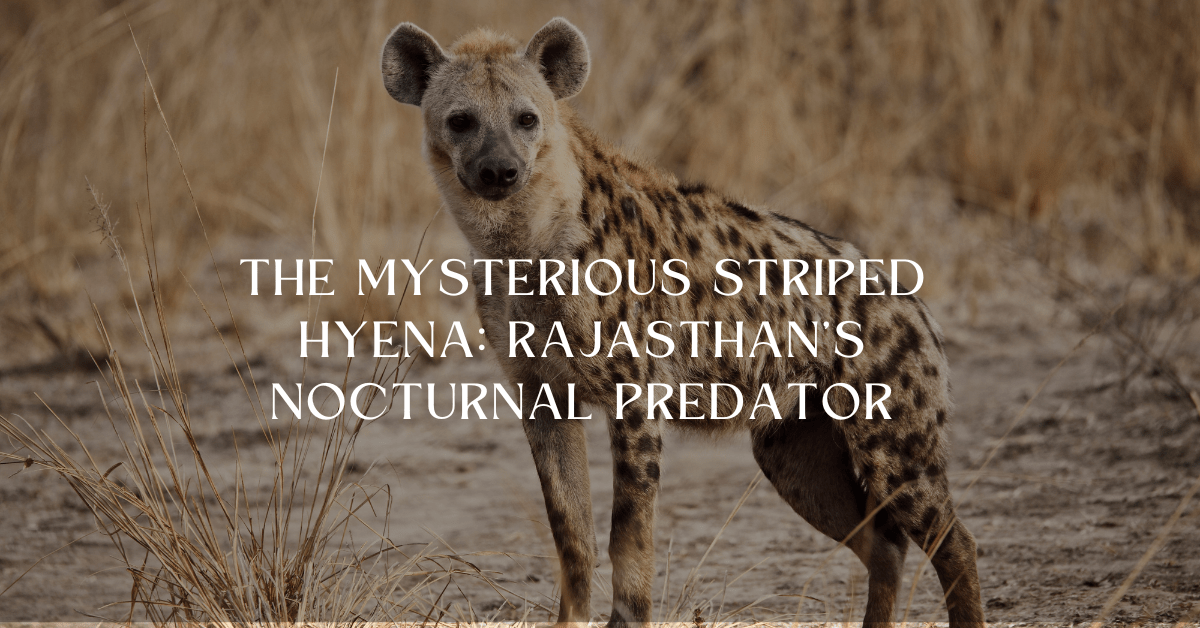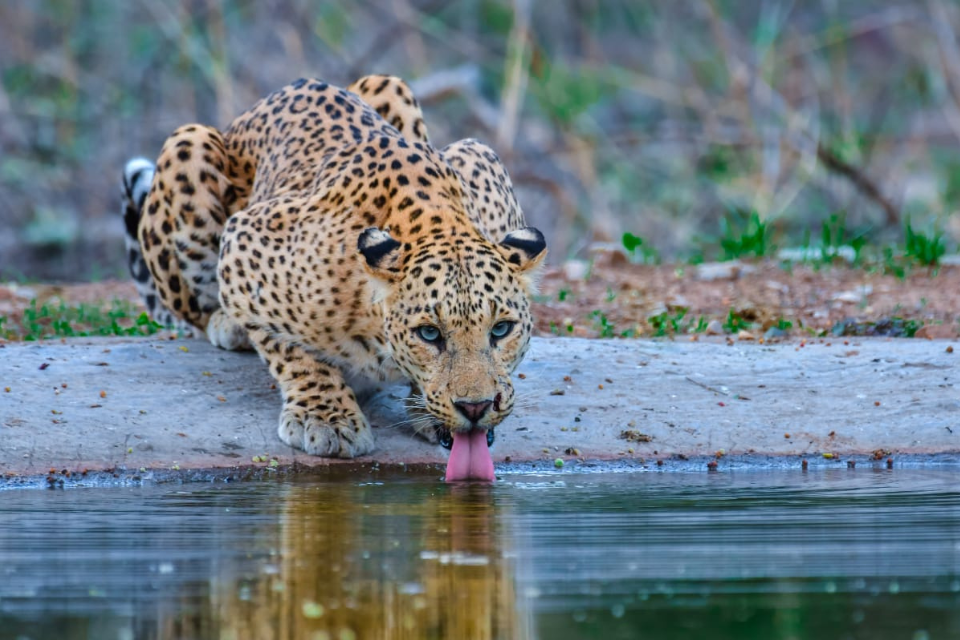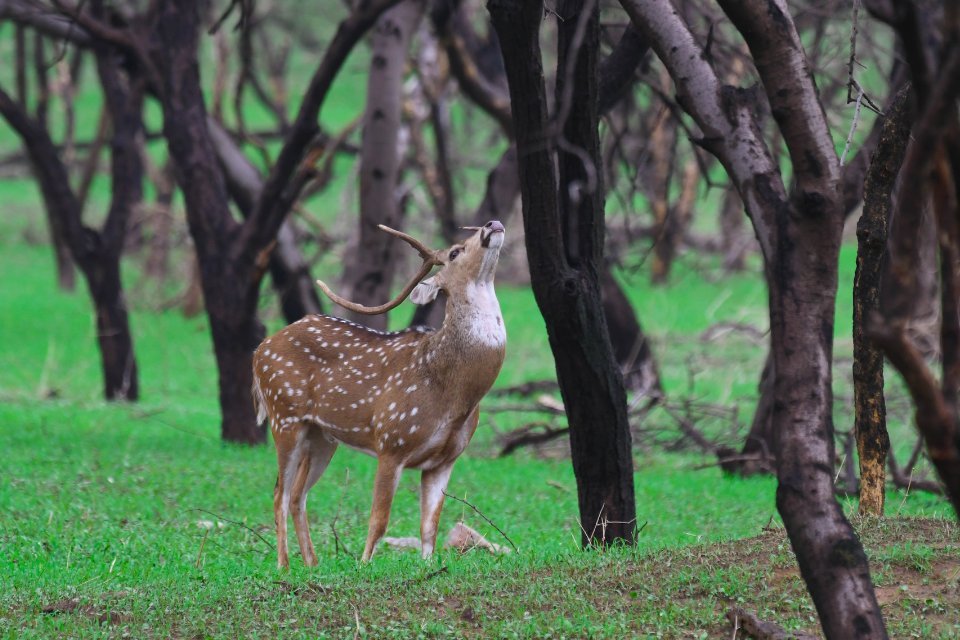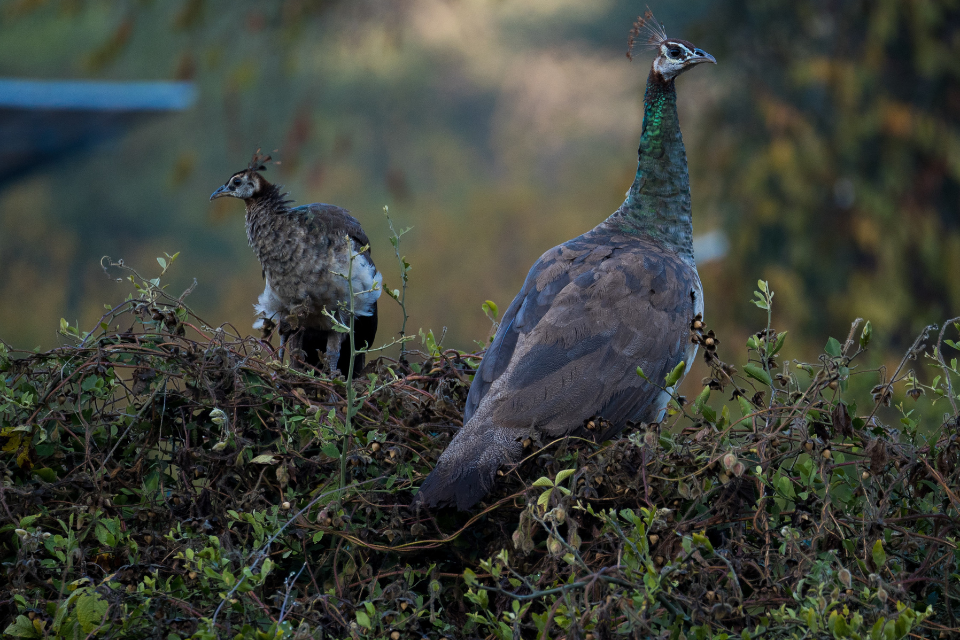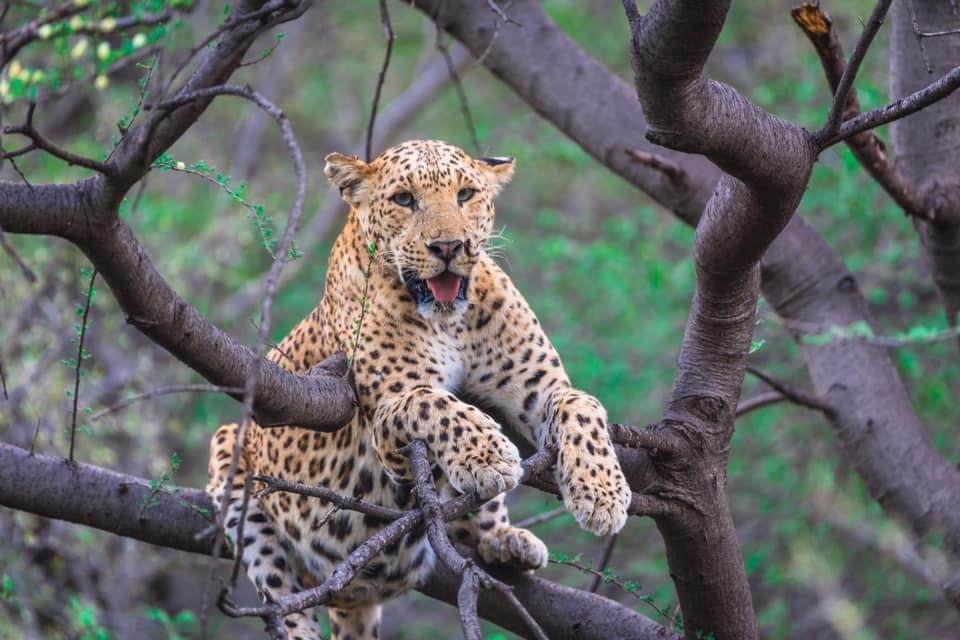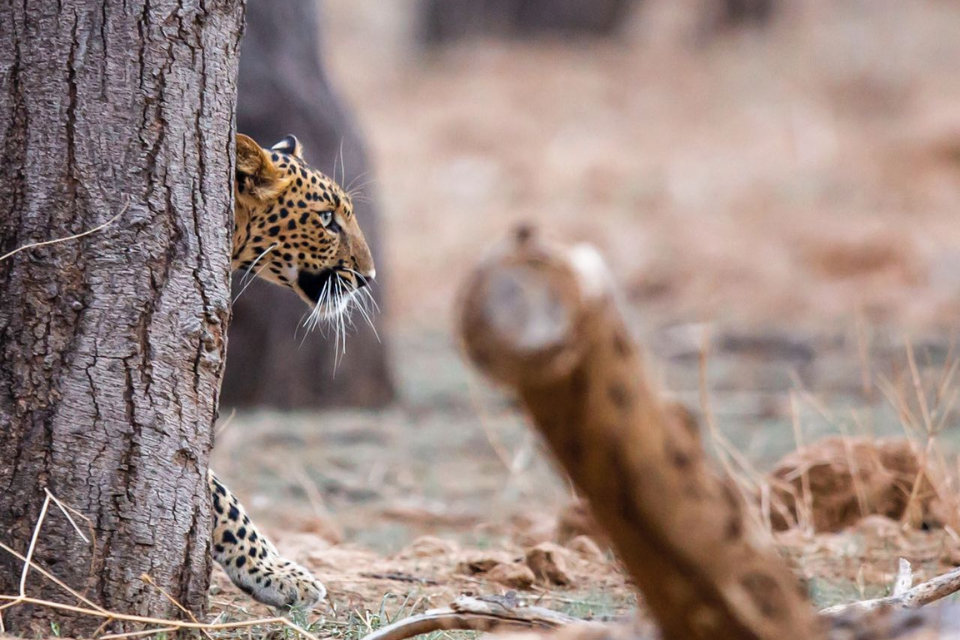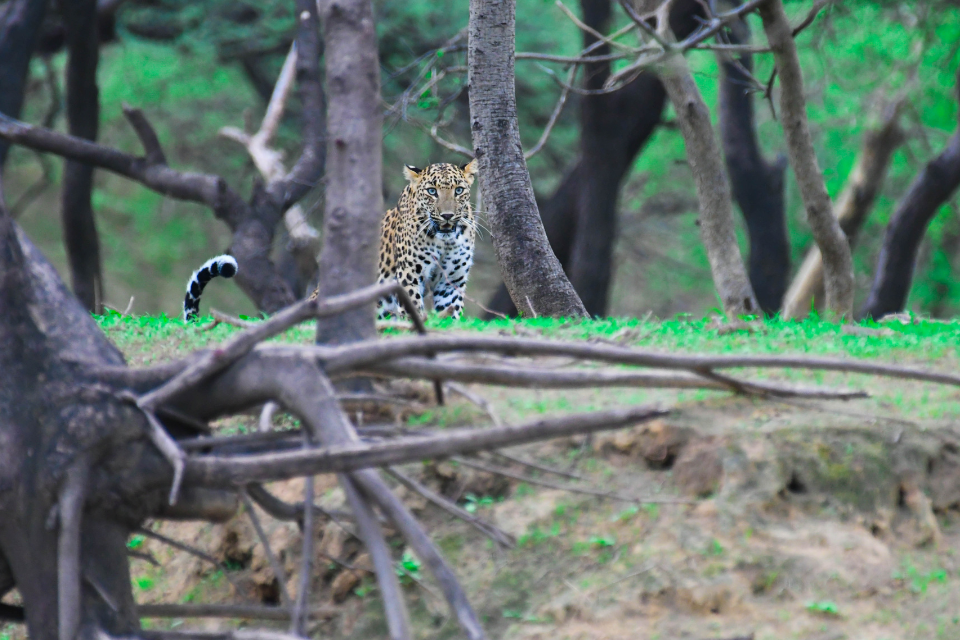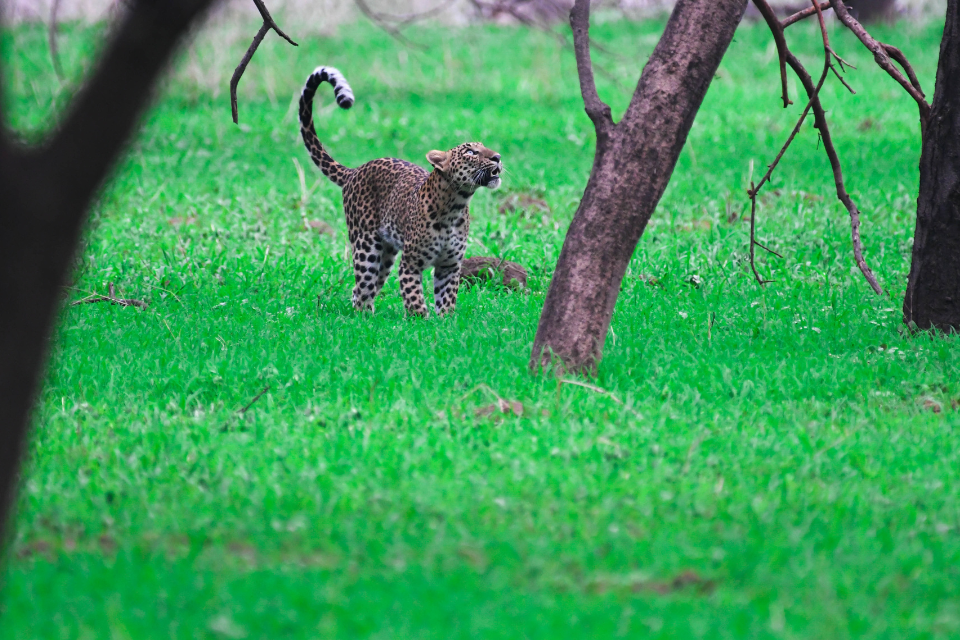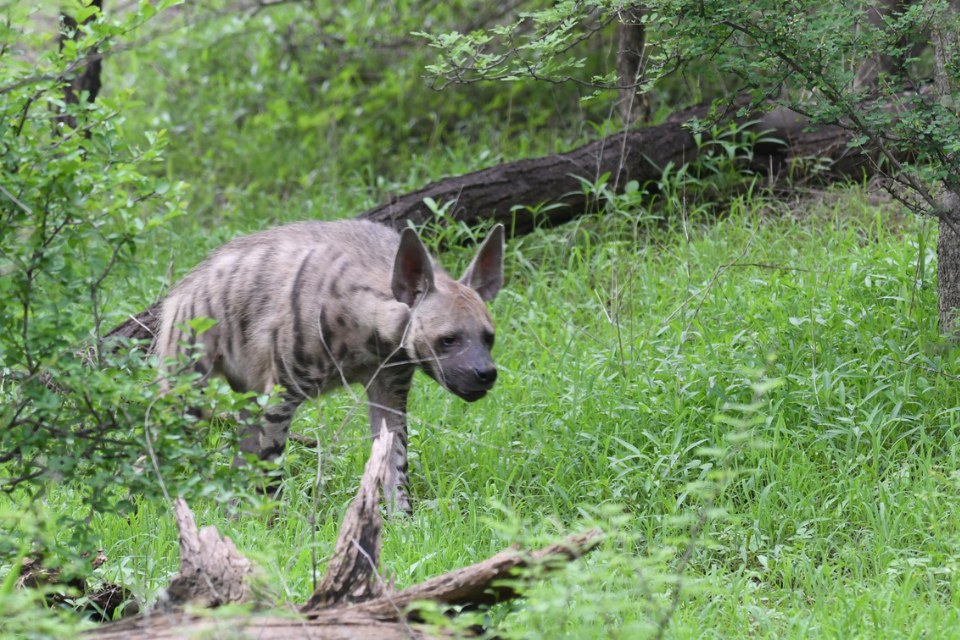- April 21, 2025
The Mysterious Striped Hyena: Rajasthan’s Nocturnal Predator
The Striped Hyena (Hyaena hyaena), one of the most misunderstood and rarely seen predators in India, silently roams the rocky hills, dry forests, and deserts of Rajasthan. Unlike the infamous spotted hyenas of Africa, the striped hyena is a solitary, shy, and nocturnal creature, avoiding human interaction as much as possible.
While often depicted as cowardly scavengers, these fascinating animals play a crucial role in maintaining the ecosystem, acting as nature’s cleanup crew. However, habitat destruction, human-wildlife conflict, and myths surrounding hyenas have pushed their population into a slow but steady decline.
Let’s explore the striped hyena’s secretive world, its importance in Rajasthan’s ecosystem, and how conservation efforts are helping to protect this misunderstood predator.
- Meet the Striped Hyena – India’s Shadowy Scavenger
📌 Scientific Name: Hyaena hyaena
📌 Status: Near Threatened
📌 Height: 65 – 80 cm at the shoulder
📌 Weight: 25 – 45 kg
📌 Lifespan: 10 – 12 years in the wild
📌 Best Places to See: Kumbhalgarh, Sariska, Jaisalmer
✔ Recognizable by its black-and-white striped coat and bushy mane.
✔ Unlike African hyenas, striped hyenas are mostly solitary, only coming together during mating season.
✔ Extremely quiet and elusive, using caves and rocky crevices for shelter during the day.
🚀 Fun Fact: The Striped Hyena can raise the long hairs on its back like a mohawk when threatened, making itself look bigger and scarier!
- Why is Rajasthan a Stronghold for the Striped Hyena?
Though found in parts of North Africa, the Middle East, and Central Asia, the Striped Hyena has a strong presence in Rajasthan. But why?
🌄 A. Perfect Habitat – Rocky Hills & Scrublands
✔ Striped hyenas prefer rocky, semi-arid landscapes, which Rajasthan has in abundance.
✔ These areas provide plenty of caves and burrows for shelter.
🚀 Best Places to Spot Hyenas in Rajasthan:
- Kumbhalgarh Wildlife Sanctuary – Known for frequent hyena sightings.
- Sariska Tiger Reserve – A hyena stronghold within the Aravalli hills.
- Desert National Park – Remote areas of Jaisalmer still hold a stable population.
🍖 B. Availability of Food – The Ecosystem’s Cleanup Crew
✔ Hyenas are opportunistic feeders, eating leftover carcasses, small animals, and even fruits.
✔ They play a vital role in the ecosystem by cleaning up dead animal remains, preventing disease outbreaks.
🚀 Fun Fact: A striped hyena’s jaw is strong enough to crush bones, allowing it to digest bone marrow that other predators leave behind.
🌙 C. Nocturnal Lifestyle – Avoiding Human Conflict
✔ Unlike leopards and wolves, hyenas rarely attack livestock—they prefer scavenging over hunting.
✔ Their strictly nocturnal nature helps them avoid direct encounters with humans.
🚀 Fact: Many villagers never see hyenas, even though they live nearby!
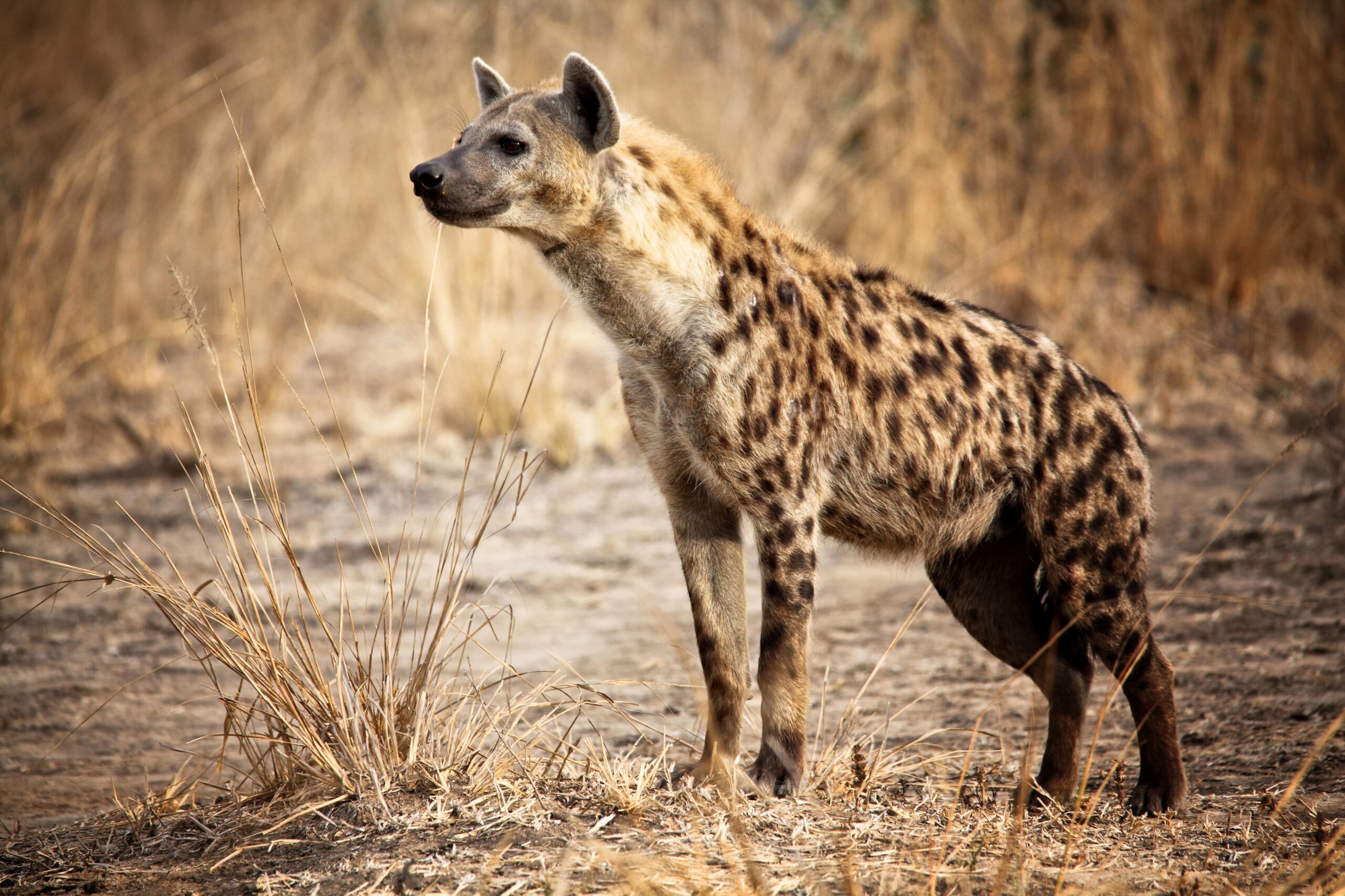
- Role of the Striped Hyena in Rajasthan’s Ecosystem
The striped hyena is not just a scavenger—it is an important part of Rajasthan’s food chain.
✔ Nature’s Waste Manager – Removes rotting carcasses, reducing the spread of disease.
✔ Keeps Ecosystem Balanced – Prevents overpopulation of rodents and small mammals.
✔ Recycles Nutrients – Bone-eating habits return essential minerals to the environment.
🚀 Myth vs. Fact: Despite old myths, hyenas do not steal children or attack humans—they are naturally shy and avoid people.
- Threats to Rajasthan’s Striped Hyena Population
While still found in Rajasthan, striped hyenas face multiple threats that could drive them to extinction.
⚠️ A. Habitat Destruction & Land Encroachment
❌ Expanding cities and farms are destroying hyena caves and hiding spots.
❌ Mining and deforestation have reduced rocky landscapes, making it harder for hyenas to find shelter.
🚀 Fact: Rajasthan’s increasing tourism and infrastructure development could push hyenas out of their last remaining safe zones.
⚠️ B. Road Accidents & Human-Wildlife Conflict
❌ Many hyenas are killed on highways while searching for food at night.
❌ Villagers mistakenly believe hyenas are dangerous, leading to unnecessary killings.
🚀 Solution: Wildlife corridors and awareness campaigns are helping reduce road accidents and conflict.
⚠️ C. Superstitions & Myths Leading to Hunting
❌ Some cultures believe hyena body parts have magical properties, leading to illegal killings for traditional medicine.
❌ Many people see hyenas as bad omens or thieves, increasing hostility towards them.
🚀 Solution: Education programs are being introduced to change the perception of hyenas and highlight their ecological importance.
- Conservation Efforts: How Rajasthan is Helping Hyenas Survive
To ensure striped hyenas continue thriving in Rajasthan, conservationists and wildlife authorities are taking action.
🛡️ A. Expanding Wildlife Protection Zones
✔ More areas in Rajasthan are being designated protected zones for wildlife, including hyenas.
✔ Buffer zones are being created around existing reserves to reduce human-wildlife conflict.
🚀 Success Story: Kumbhalgarh Wildlife Sanctuary has seen a steady increase in striped hyena sightings, proving that conservation works.
🛡️ B. Awareness & Community Involvement
✔ Educating local communities about hyenas’ role as nature’s cleanup crew.
✔ Encouraging villagers to report illegal poaching instead of hunting hyenas out of fear.
🚀 Success Story: Wildlife groups are using camera trap footage to show villagers that hyenas help maintain the environment rather than harm it.
🛡️ C. Reducing Roadkill & Conflict with Humans
✔ Installing “Wildlife Crossing” signs on highways near hyena habitats.
✔ Developing safe corridors to help hyenas move between forests without crossing roads.
🚀 Success Story: In some areas, road signs and speed restrictions have helped reduce wildlife deaths by 30%.
- The Future of the Striped Hyena in Rajasthan
✔ While still facing threats, Rajasthan’s striped hyena population is relatively stable compared to other parts of India.
✔ More research, better conservation laws, and community awareness can help protect the species for future generations.
✔ If Rajasthan continues to preserve its natural landscapes and educate communities, the striped hyena can make a full comeback.
🚀 Key Future Goals:
✅ Establishing dedicated hyena conservation zones.
✅ Increasing research and population monitoring.
✅ Strengthening wildlife protection laws against hunting and poaching.
🌍 Final Thought: Rajasthan’s striped hyena may be one of India’s most misunderstood predators, but it is also one of the most important for the ecosystem. By changing perceptions and improving conservation efforts, we can ensure that this nocturnal scavenger continues to thrive in Rajasthan’s wild landscapes.
🔍 Have you ever spotted a striped hyena in Rajasthan?
Disclaimer All images used in this blog are either sourced from public domain or credited to their respective owners. If you are the copyright holder of any image and wish to request its removal or proper attribution, please contact us at [email protected]
